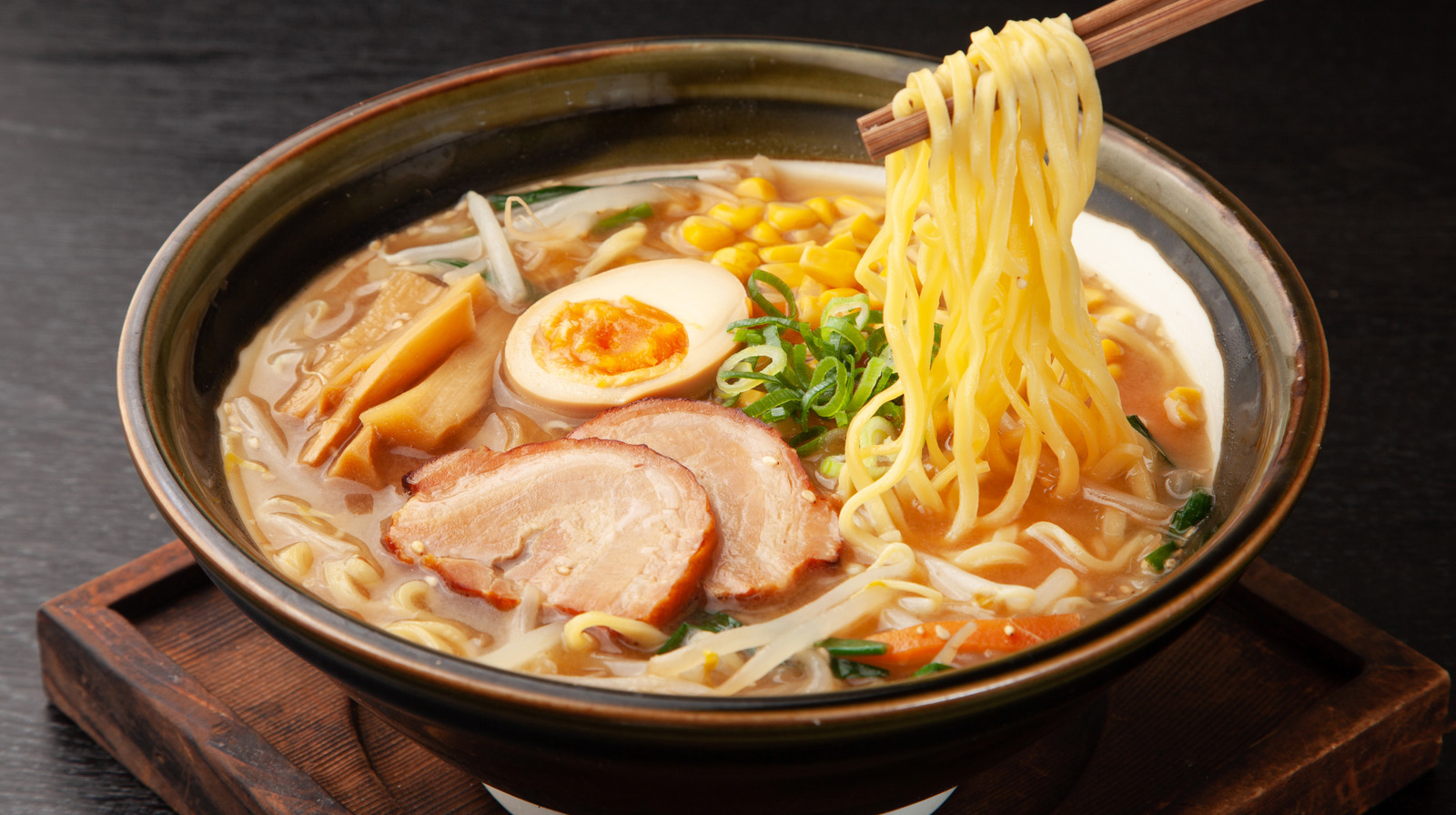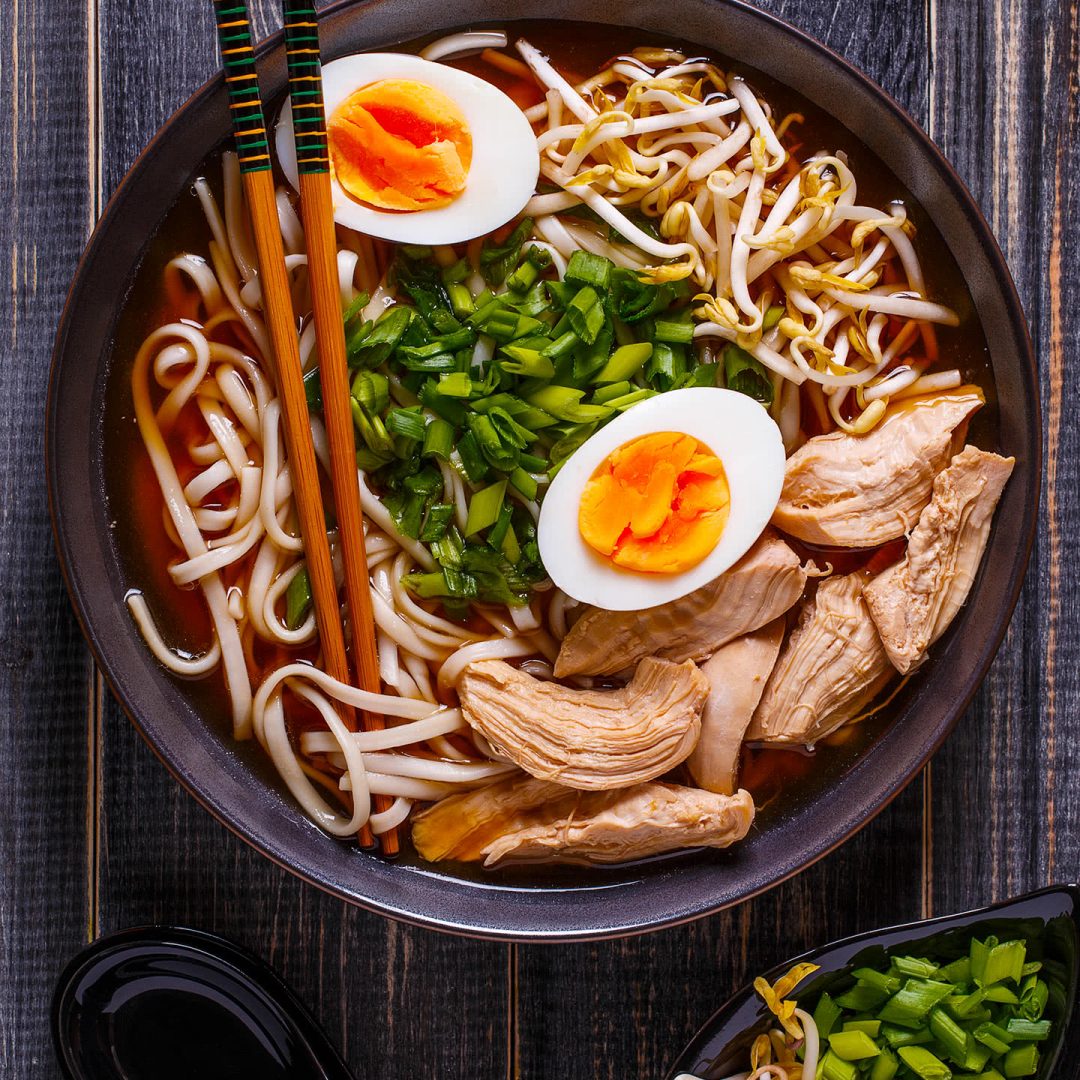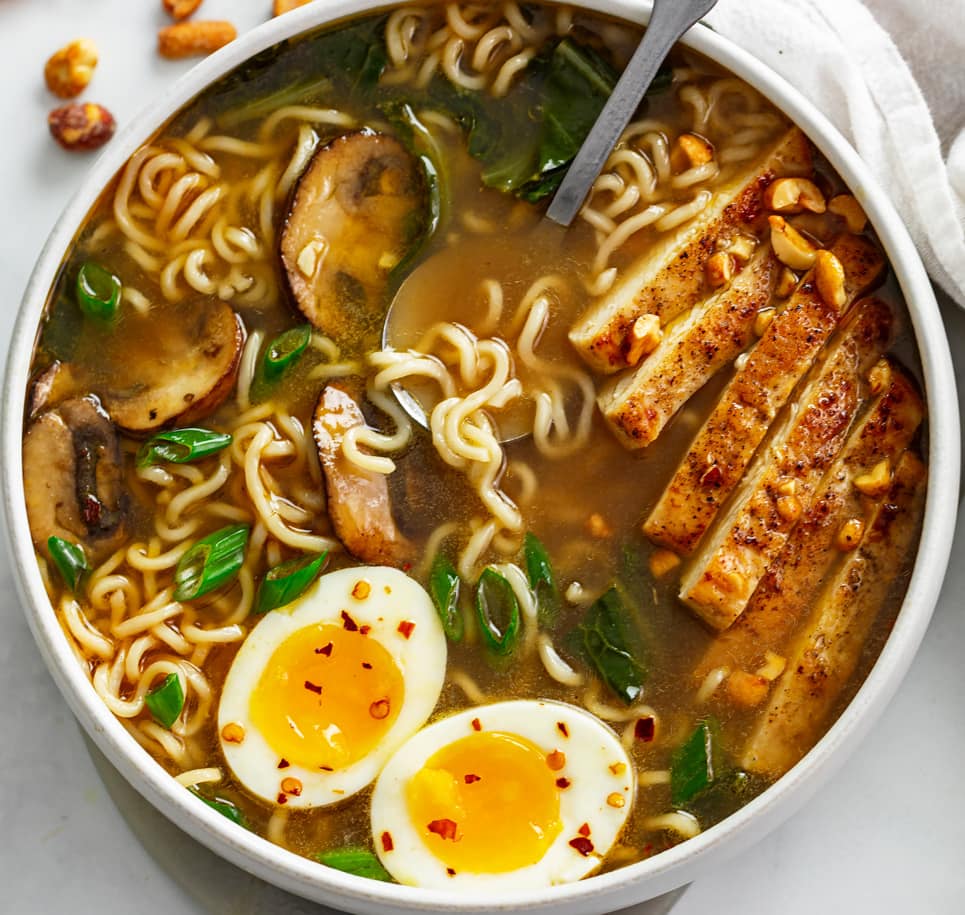You know, there's something truly comforting about a warm bowl of ramen, isn't there? It’s that feeling of coziness, a kind of hug in a bowl, that just settles everything. Then you think about carbonara, with its rich, creamy goodness, and how it coats your mouth in a delightful way. What if, just perhaps, these two amazing comfort foods could somehow come together? It’s a thought that, well, really gets the taste buds tingling, a little, almost.
Ramen, as a matter of fact, has this incredible story, starting as a simple noodle dish from China and then, you know, making its way into the hearts of people all across Japan and, actually, the whole wide world. It’s become a dish that so many folks absolutely adore, whether it’s the rich tonkotsu, the savory miso, or the light shoyu versions. We see it everywhere, from little street stalls to rather fancy dining spots, showing just how much it has grown in popularity, sort of.
The cool thing about ramen, you see, is that it’s not really a fixed thing. It’s more like a canvas, a very adaptable kind of dish where the parts and the tastes can be, like, mixed and matched in endless ways. This idea of endless possibilities is what makes thinking about something like "ramen carbonara" so exciting, isn't it? It means there's room to play, to explore new combinations, and to create something that feels both familiar and, you know, completely new, in a way.
Table of Contents
- What Makes Ramen So Special?
- The Heart of Ramen - Broth and Noodles
- What is the Carbonara Connection for Ramen?
- Blending Flavors - Ramen Carbonara Style
- How Does One Create a Ramen Carbonara Experience?
- Crafting Your Own Ramen Carbonara Twist
- Why Explore Ramen Carbonara?
- The Future of Fusion - Beyond Ramen Carbonara
What Makes Ramen So Special?
So, what truly makes a bowl of ramen stand out? It's really about the different elements coming together, creating a complete experience for your senses. You have the noodles, which are the very backbone of the dish, then there's the liquid part, a deep, flavorful broth, and finally, all those wonderful things that sit on top. We once had this birria ramen, and the meat was so tender, the tastes really hit all the right spots, you know? It was pretty memorable, that.
Think about the different kinds of ramen you can find out there, too. There’s the comforting tonkotsu, which is usually a very rich and creamy pork bone broth, or the one with garlic, which gives it a rather pungent kick. Then you have miso ramen, with its unique fermented soybean paste flavor, and shoyu ramen, which often has a clear, soy sauce-based soup. These are just some of the widely loved kinds you can find, and each one offers a slightly different adventure for your palate, more or less.
It’s a dish of noodles, liquid, and a whole bunch of different things on top. While there are, you know, some classic types, the parts and tastes can be mixed and matched in so many ways. This flexibility is what makes ramen such a great starting point for new ideas, like, say, a ramen carbonara. It’s not just about eating; it’s about experiencing a kind of culinary art, actually.
The Heart of Ramen - Broth and Noodles
When you talk about ramen, the liquid part, the broth, is often considered the soul of the whole thing. Making a good tonkotsu broth, for example, can take at least a day of simmering, slowly coaxing out all those deep, savory tastes. That kind of time and care really shows in the final product, giving it a depth that you just can't rush. It's a serious project on your hands, you know, getting it just right.
And then there are the noodles themselves. Do you ever want to make those wonderfully chewy, springy homemade ramen noodles, just like the ones you find in those little soup shops in Japan? With a few special things and, like, a good block of free time, these noodles are absolutely worth the extra effort. They really make a difference to the feel of the dish, giving it that perfect bite, so.
For a shoyu ramen, for instance, you're usually looking at four main parts to prepare. There's the dashi and tare, which are for the soup base, giving it that fundamental taste. Then you have nitamago, which are those lovely marinated eggs, and chashu, the pork belly, which are often the showstopping additions. Thinking about these separate elements helps you, you know, see how a ramen carbonara might come together, too.
What is the Carbonara Connection for Ramen?
So, if we're thinking about a "ramen carbonara," what exactly are we pulling from the classic Italian dish? Carbonara, at its core, is pretty simple but incredibly rich. It usually involves eggs, a hard cheese like Pecorino Romano, cured pork like guanciale or pancetta, and a generous amount of black pepper. It's that creamy, savory coating that makes it so beloved, isn't it? The way it clings to every strand of pasta is just, like, pure comfort.
The real question is that how do these distinct elements from carbonara, you know, fit into the world of ramen? Ramen already has noodles and a savory base. Carbonara brings a different kind of richness, a creamy texture from the egg and cheese, and a salty, smoky taste from the cured pork. It's about finding a way to blend these without losing what makes each dish special, kind of.
This is where the "mix and match" idea we talked about earlier becomes very important for "ramen carbonara." Ramen itself is so adaptable, with its thousands of variations. It means there's a lot of room to experiment, to see how the fatty, salty taste of the pork and the creamy egg sauce can, like, complement or even transform a ramen broth. It’s about creating a new kind of harmony, you know, in a bowl.
Blending Flavors - Ramen Carbonara Style
When you think about blending the tastes for a "ramen carbonara," it's about finding that sweet spot where the deep, umami-rich liquid of ramen meets the velvety, eggy coating of carbonara. Imagine a rich tonkotsu liquid, perhaps, with its pork base, already having some common ground with the pork element in carbonara. That could be a really good starting point, so.
The additions, the toppings, are where things get really interesting for a "ramen carbonara." Ramen often features chashu, which is that lovely, melt-in-your-mouth pork belly. That's not too far off from the cured pork in carbonara, is it? You could, like, even adapt the way it's prepared to give it a more carbonara-like taste. And those marinated eggs, the nitamago, could be made to have a creamier yolk, more like the egg in carbonara, or simply served alongside the creamy sauce.
It’s not just about throwing things together; it’s about a thoughtful combination. The saltiness from the cheese, the warmth from the black pepper, and the richness of the egg sauce need to somehow become part of the ramen experience, rather than just sitting on top of it. This means thinking about how the liquid, the noodles, and the toppings all work together to create a new, cohesive flavor, actually.
How Does One Create a Ramen Carbonara Experience?
So, how would someone actually go about making a "ramen carbonara" that really works? It starts with thinking about the basic parts of ramen that we know. You have the dashi and tare for the soup base, which are so important for that authentic taste. How might these be changed or even replaced to fit a carbonara profile? Perhaps a lighter dashi that lets the carbonara elements shine, or a tare that leans into savory, cheesy notes, you know.
Then there are the noodles. Ramen noodles are known for their chewiness and how they hold up in a hot liquid. For a "ramen carbonara," you'd want noodles that can also pick up that creamy sauce well, perhaps a type that's a little thicker or has a rougher surface. It’s about making sure the texture is just right, so it doesn't feel like two separate dishes in one bowl, but rather one harmonious creation, more or less.
The additions are, like, where the carbonara really comes in. Instead of traditional chashu, maybe a crispy, salty piece of pork belly, cooked until it's almost like bacon. And the egg? While nitamago are great, a soft-boiled egg with a runny yolk, mixed in at the end, could provide that classic carbonara creaminess. It’s about taking those familiar ramen components and giving them a carbonara twist, kind of.
Crafting Your Own Ramen Carbonara Twist
Making your own "ramen carbonara" really lets you play around. Since ramen itself has so many variations, the possibilities for this fusion are, you know, practically endless. You could start with a simple broth and then build up the carbonara elements, or you could try to fold the carbonara tastes into a richer ramen liquid, like a tonkotsu, that.
It’s all about finding that right balance. You want the richness of the carbonara to come through, but you also don't want to lose the fundamental, comforting taste of ramen. Maybe a lighter broth, or a very savory one that can stand up to the cheese and egg. It’s a bit of an experiment, really, finding what feels good to your own taste.
Think about the different ways you can add that carbonara feel. It could be a sauce mixed into the broth, or a separate sauce that coats the noodles, or even just the specific toppings and a very rich, runny egg. The goal is to get that creamy, salty, peppery taste that defines carbonara, but within the familiar, warm embrace of a ramen bowl, you know, just a little.
Why Explore Ramen Carbonara?
Why would anyone even think about combining ramen and carbonara? Well, it's pretty simple, actually. It’s about the joy of trying something new, of pushing the boundaries of what we think food can be. Ramen, once a simple street food, has, like, grown into a gourmet phenomenon all over the world. This kind of fusion is just another step in that growth, showing how adaptable and creative food can be.
It’s also about bringing together two dishes that, at their core, offer immense comfort. Both ramen and carbonara are those kinds of meals that make you feel warm and satisfied inside. Combining them is, in a way, like doubling down on that feeling of coziness. It offers a new experience that still feels familiar and deeply satisfying, so.
And let's be honest, trying something new in the kitchen, something a little unexpected, is just plain fun. It sparks conversation, it gets people curious, and it opens up new ways of thinking about ingredients and tastes. A "ramen carbonara" is, you know, a perfect example of that kind of playful, delicious exploration, isn't it?
The Future of Fusion - Beyond Ramen Carbonara
Thinking about "ramen carbonara" kind of opens up a whole world of other possibilities for ramen. If you can combine it with something like carbonara, what else could work? The idea that ramen can be mixed and matched in endless ways means that its future is, you know, pretty wide open. We see dishes like the birria ramen, where the tender meat and intense tastes really worked, so it's clear that ramen can take on many different influences.
It's about taking the core parts of ramen – the noodles, the liquid, the toppings – and seeing how they can interact with tastes and ideas from other food traditions. Maybe a ramen with a different kind of spicy kick, or one that uses very unique vegetables. The beauty is that ramen provides such a solid, comforting base that it can really support a lot of creative ideas, more or less.
So, whether it's a "ramen carbonara" or something completely different, the ongoing story of ramen is one of continuous change and new discoveries. It's a dish that keeps giving, always finding new ways to delight people with its familiar warmth and surprising new twists. It makes you wonder what kind of delicious ideas people will come up with next, you know?
Related Resources:



Detail Author:
- Name : Ms. Della Quitzon
- Username : lspinka
- Email : delfina06@waelchi.com
- Birthdate : 2004-08-10
- Address : 89718 Bonnie Neck Suite 361 Casperfurt, AK 32204
- Phone : +19403208189
- Company : Auer-Lehner
- Job : Healthcare Practitioner
- Bio : Dicta minima sit ipsam. Rerum adipisci omnis sequi adipisci nisi. Qui nesciunt provident fugit iusto magni et.
Socials
twitter:
- url : https://twitter.com/thalia.kshlerin
- username : thalia.kshlerin
- bio : Fuga ut nihil consequatur non. In fuga magnam ea qui natus aut blanditiis. Velit ipsa dolor odio eum perferendis qui sapiente.
- followers : 4482
- following : 1119
linkedin:
- url : https://linkedin.com/in/thaliakshlerin
- username : thaliakshlerin
- bio : Error maxime vel commodi incidunt et.
- followers : 4748
- following : 928
tiktok:
- url : https://tiktok.com/@thalia_xx
- username : thalia_xx
- bio : Id neque voluptates sed sint at fugit dolor.
- followers : 3765
- following : 1639
instagram:
- url : https://instagram.com/thalia.kshlerin
- username : thalia.kshlerin
- bio : Cum dolores aut veritatis tempore. Quia et tempora et.
- followers : 1340
- following : 2873
facebook:
- url : https://facebook.com/thalia_kshlerin
- username : thalia_kshlerin
- bio : Molestiae est ea optio consequatur. Et est praesentium illo qui ad.
- followers : 4626
- following : 2176